#House Czartoryski
Explore tagged Tumblr posts
Photo

Princess Zofia Czartoryska (15 September 1778 – 27 February 1837) was a Polish noblewoman.
2 notes
·
View notes
Text
Czartoryski Museum Kraków Poland
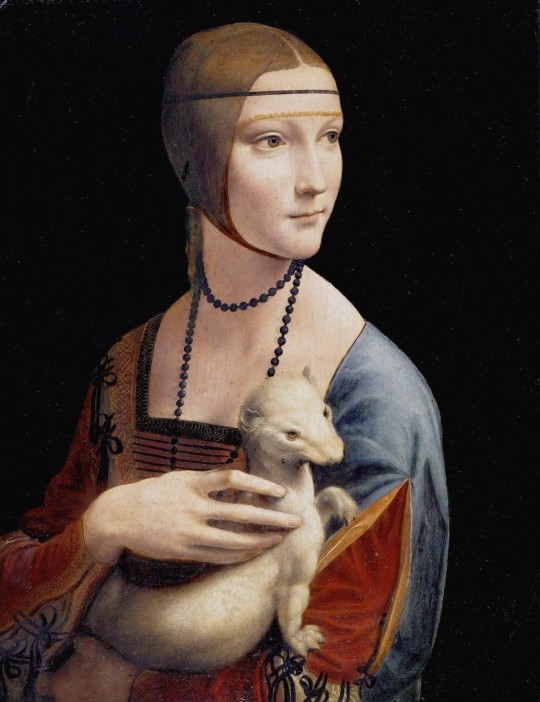
View On WordPress
#Antonina Czartoryska Grand Chancellor of Lithuania#Congress Kingdom of Poland#Congress of Vienna#Czartoryski Museum Gothic House#Czartoryski Museum Kraków#Czartoryski Museum Temple of the Sibyl#Jan Jerzy Flemming Grand Treasurer of the Crown#Kraków Old Town#Lieutenant Piotr Wysocki Army of Congress Poland#MNK Muzeum Czartoryskich#Napoleon’s Warsaw Duchy#Nazis XX Foundation#Parable of the Good Samaritan by Rembrandt van Rijn#Polish Cadet Revolution#Polish May 3rd Constitution#Polish November Uprising#Polish–Russian War 1830–31#Portrait of a Lady with an Ermine by Leonardo da Vinci#Princess Izabela Czartoryska née Flemming#Puławy Poland
1 note
·
View note
Photo
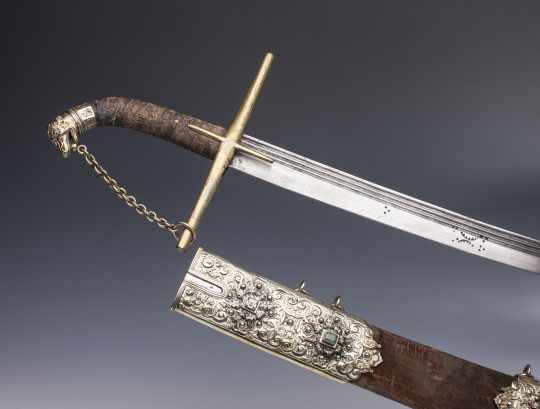
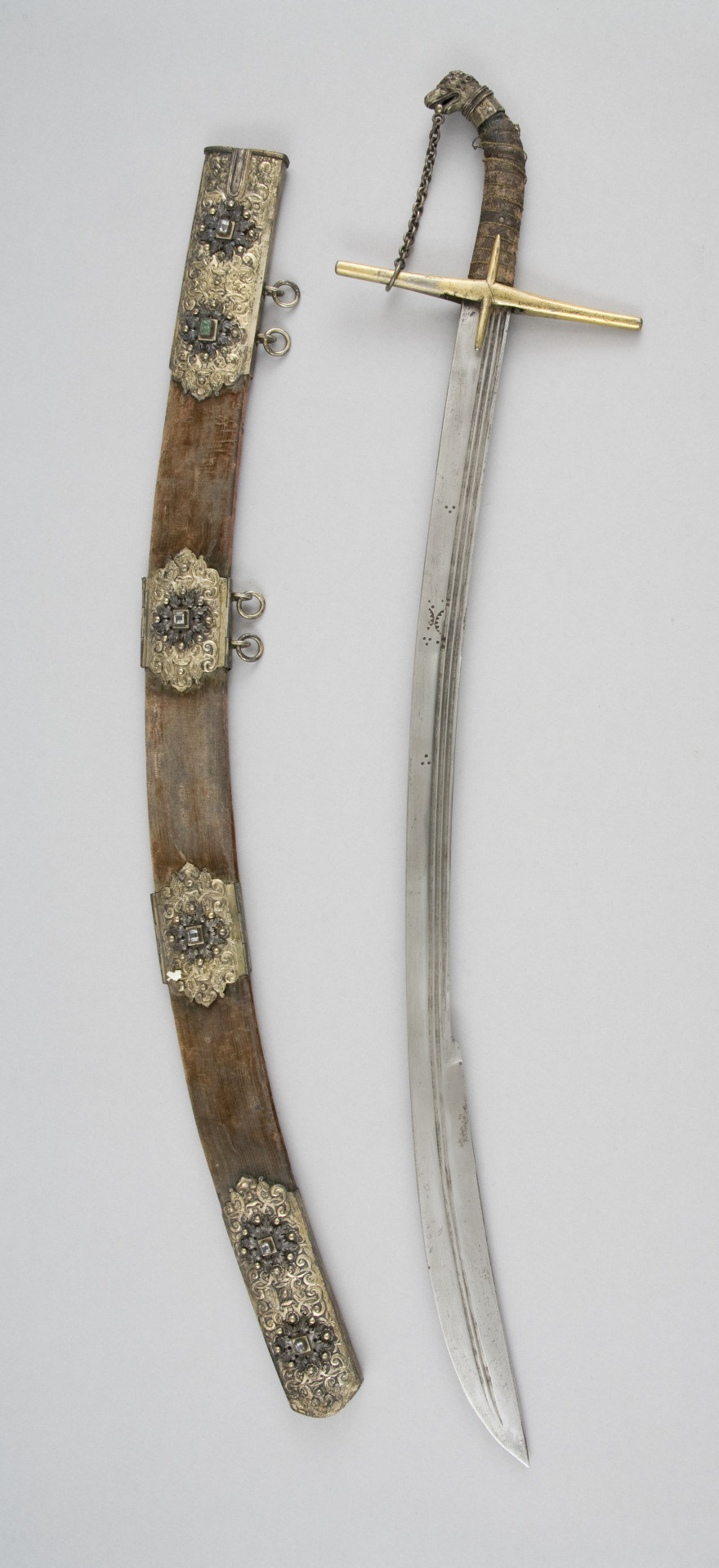
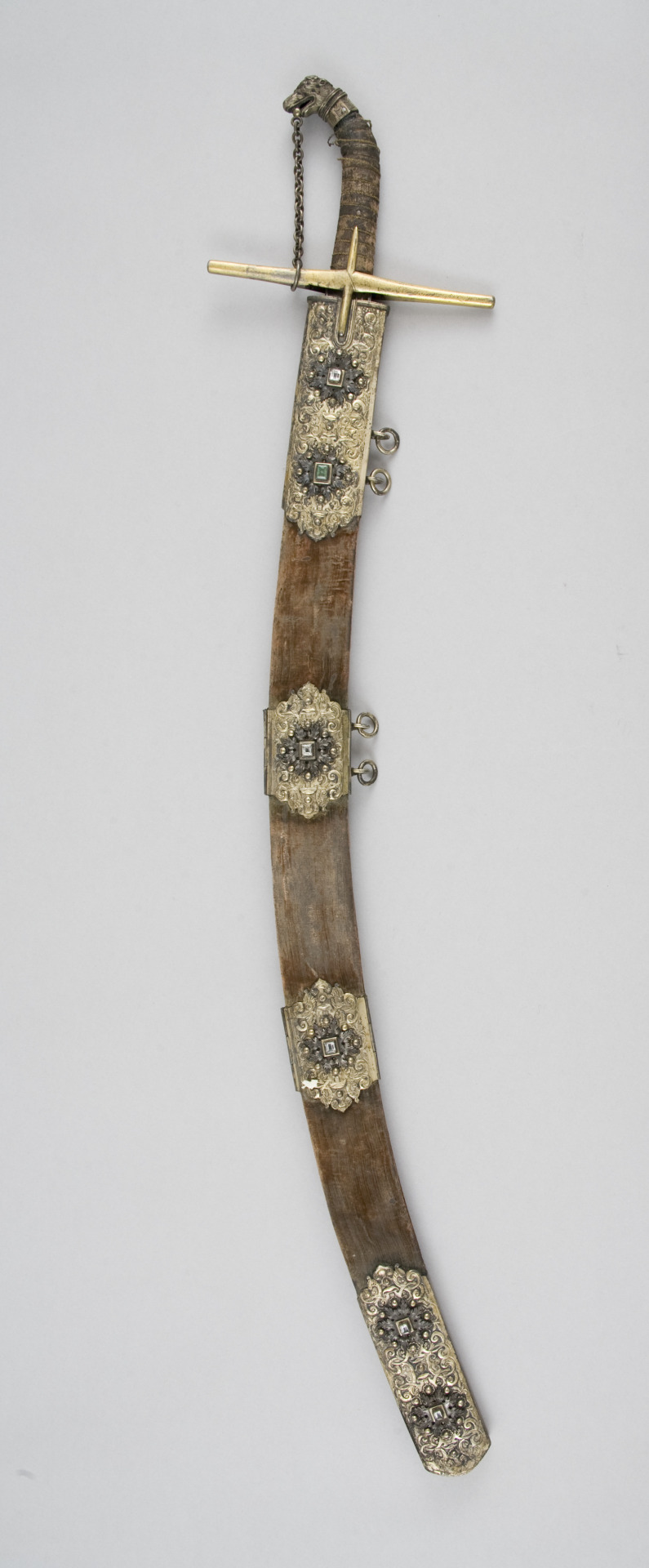
A fabulously gilt Sabre embellished with quartz and emerald,
OaL: 36.1 in/91.8 cm
blade from Dresden, Germany, hilt and fittings from Genua, Italy, 1687, housed at the Czartoryski Museum, Krakow.
#weapons#sword#sabre#europe#european#italy#italian#genoa#germany#german#dresden#hre#holy roman empire#early modern#czartorynski museum#art#history
641 notes
·
View notes
Text

A pair of finely fluted Spaulders with integrated Couters made for Holy Roman Emperor Maximilian II, attributed to Desiderius Helmschmid, Augsburg, Germany, ca. 1557, housed at the Czartoryski Museum, Krakow. via: tumblr.com/armthearmour
6 notes
·
View notes
Text

From the Czartoryski Museum in Krakow
Fun fact: my confirmation name was Lucia, after Saint Lucy, who is celebrated on the winter solstice (though the date stayed on Dec 13 when the Julian calendar was changed to the Gregorian calendar). My grandma used to have a painting of St Lucy with her eyeballs on a platter in her guest room. As a child I was so freaked out by that painting that she would cover it with a towel whenever I stayed at her house.
youtube
Fun fact: Fred Moten is obsessed with this recording of John Donne’s “A Nocturnal upon St. Lucy's Day”. He says everything he’s ever written is about this poem.
My favorite stanza:

Happy winter solstice
14 notes
·
View notes
Text
I tried to find something to clear things up but was out of luck.
Translated from "Die Geheimpolizei auf dem Wiener Kongress" again, a police report dated 28th November, to be read on the 29th:
. . . Yesterday the Russian Emperor, the King of Prussia and all the sovereigns dined at Zichy-Ferrari’s, Sunday at Bagration’s. When they went to dinner, the Russian Emperor gave Madame Bagration his arm; the King of Prussia remained standing, waiting for Julie Zichy. Julie Zichy did not want to be led, did not want to take precedence over ladies who had rank before her; no one went forward; it was a complete confusion. People laughed horribly at the King of Prussia, who is as much in love with Julie Zichy as a young person of twenty could be. Count Razumowsky said: „Julie Zichy, apres la Saxe, est ce qu'il aime le mieux." [After Saxony, Julie Zichy is what he loves most.] In the house of Baron Thugut and in many circles it is said: [Original in French] „. . . The position of the Austrian Minister in Petersburg will be an abyss. Emperor Alexander, back home, will be unbearable for Austria; seeing him behave as we see him in Vienna, back home, at the mercy of Prussia's insinuations and those of his favourites, the Capo d'Istria, the Stein, the Czartoryski, Wolkonsky, Ouvaroff etc? can we reasonably flatter ourselves that Austria will be able to remain in harmony, in peace without war, for only two years with an emperor as mad, as inconsistent, as unruly as this Emperor Alexander?" The great, the only impression that the Russian Emperor and the King of Prussia leave behind after such a long stay is this: they are miserable, capricious people…
No mention of feet or roses. As to Eugène’s correspondence, it doesn’t mention anything either and rather makes it sound as if Alexander was well again:
Eugène to Auguste, 28 November 1814 Business is going well here, everyone wants peace, and it seems assured. There is already talk of the sovereigns leaving on 15 December. As for our private affairs, they have been delayed by Wessemberg's indisposition. Two days ago Wrede submitted the first official note, which was well received; Emperor Alexander strongly supported it, and it is said that agreement has been reached to give us an establishment in Italy or on the Rhine. The division and boundaries of the countries are currently being dealt with, and this can't be long in coming.
On this Day: Vienna Congress Edition
november 27th, 1814
Political
N/A
Other
A court banquet for the monarchs occur.
A souper is hosted by Princess Bagration
Tsar alexander is bedridden due to a rose in his foot.
6 notes
·
View notes
Text

Prince Olgierd Czartoryski and his wife Princess Mechthildis Czartoryska nee Archduchess of Austria
#nobility#prince olgierd czartoryski#princess Mechthildis Czartoryska#polish history#poland#house of czartoryski
4 notes
·
View notes
Photo

THE PALACE
Hôtel Lambert, Paris, of The Lambert Family, of The Marquesses of Chatelet, of The La Haye Family, of The Dupin Family, of The Princes Czartoryski, of The Barons Rothschild and The Prince Abdullah bin Khalifa Al Thani of Qatar
#the palace#hôtel lambert#paris#france#french aristocracy#french nobilty#nobility#aristocracy#czartoryski#roothschild#rothschild#house#palace#castle#palacio#castillo#palais#chateau#château#schloss#burg#royal#royals#royalty#royaltyedit#architecture#interiors
26 notes
·
View notes
Photo
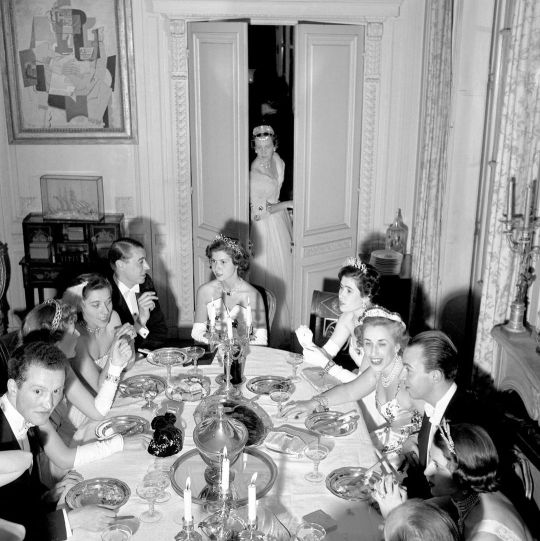
Quand on a renoncé à tous les plaisirs de la vie, il reste encore celui de se lever de table après un dîner ennuyeux.
- Paul Claudel
The Hôtel Lambert, on Paris’s Île Saint-Louis, has long been the city’s most glamorous townhouse, welcoming guests from Balzac to Brigitte Bardot. Its inhabitants, such as the notorious Baron de Redé, used its 17th Century Baroque interiors as the backdrop for mythical parties.
The country home, originally built in the 1640s by the French financier Jean-Baptiste Lambert and his family, had been taken over in the intervening centuries by other aristocrats, including the Marquise du Châtelet who lived there with her lover, the author Voltaire, and the exiled Polish Prince Czartoryski. In its heyday, it had hosted cultural luminaries like Coco Chanel, Delacroix, Chopin and Balzac in its gilded salons, although it had fallen into disuse by the early 20th century.
Guy and Marie-Hélène de Rothschild, members of the French banking dynasty, bought the hotel in 1975 and restored it to its former glory. In 2007, Qatar’s Sheikh Hamad bin Abdullah Al Thani picked up the keys to the house, for a reported $90 million, and further restored it, filling it with period furniture and decorations, to the tune of around $147 million.
More recently, the property was sold to French telecom billionaire and art collector, Xavier Niel, in February 2020, for a reported $226 million. He plans to turn the building into the headquarters for his private cultural foundation.
Over time, it became the home of a stunning assemblage of historic objects, from Louis XIV’s carpets to Marie-Antoinette’s carpets, which were auctioned off in a once-in-a-century sale in Paris in October 2022. Like its visitors, each piece of gilt or porcelain has its own special history.
Following a week of auctions in Oct 2022, the final hammer came down on the extraordinary collection offered from Paris’ most beautiful private residence. Over the course of six volumes and over 1,000 lots, the sales together brought around €76.6 million - marking a world record for a sale of French Decorative Arts, and for a ‘House Sale’ staged at Sotheby’s.
International collectors and French institutions came forth in large numbers to compete for pieces from a unique collection that combined the most precious examples of the decorative arts paired with an innate sense of harmony and beauty.
#claudel#paul claudel#quote#dining#paris#french#parisian#hotel lambert#history#society#nobility#aristocracy#france
32 notes
·
View notes
Photo

“Lady with an Ermine”, 1490 by Leonardo da Vinci (1452-1519)
■ Though not Polish in its origin, the painting symbolizes Poland's cultural heritage and is among the country's most precious treasures. It is housed at the Czartoryski Museum in Kraków, Poland.
#leonardo da vinci#da vinci#poland#polska#europe#travel#history#art#artists on tumblr#painting#italia#italy#italian#culture#krakow#cracow
45 notes
·
View notes
Text
Why Józef Poniatowski never married
“A man with a reputation of a womanizer, with a couple of illegitimate children - and not married? Why so?” Knowing my interest in prince Poniatowski different people from time to time ask me these questions. So I decided to write this post to clarify the issue.
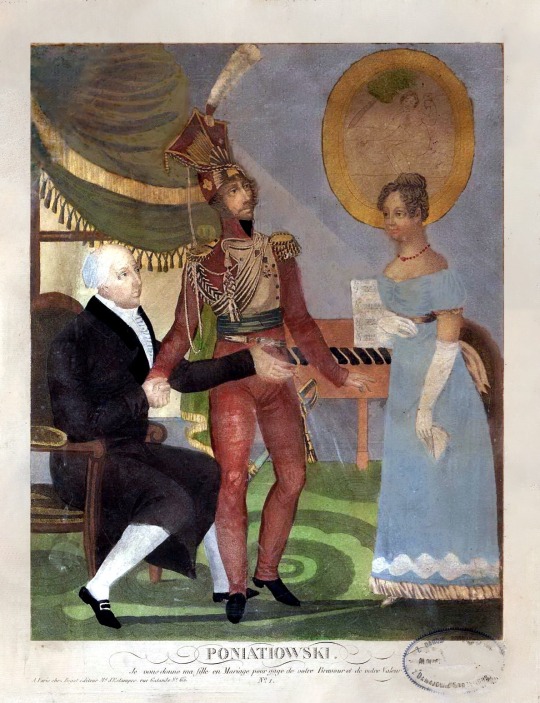
Prince Józef making a proposal, an engraving by F. Begat, 1821, from a French aquatint series illustrating Poniatowski’s life and death events - a completely imaginary, but the best illustration combining both the topics of “Poniatowski” and “marriage” I was able to find.
And to understand why Pepi remained a bachelor to the end of his days we need to have a look at his whole life, starting from the younger years.
Because when prince Poniatowski was in his twenties he did want to marry, to make his first love, the Austrian countess Karolina von Thun, his wedded wife.

Maria Carolina Anna von Thun, miniature brush by Anna Hochstädt (based on the original by Friedrich Heinrich Füger).
But, as I wrote in the post dedicated to prince Józef’s women, Pepi’s uncle, the Polish king, didn’t allow the nephew to associate himself with a girl of his choice. So, in the first case Poniatowski didn’t marry because he was prohibited to.
Furthermore, the king had his own ideas on which families it would have been convenient to become related with ordering prince Józef’s hands to their daughters. Among them there were a couple of cousins Czartoryskis (Maria and her younger sister, Zofia). Then Krystyna - the daughter of Ignacy Potocki. And one more girl - from Rzewuski family etc. (But all these projects remained on paper, and I am not even sure whether Józef knew about them.)
Anyway, the pressing of necessity to obey his uncle-king in matrimonial matters remained with prince Józef at least until Stanisław’s August abdication in 1795 (if not till 1798, when the latter died). And Pepi was finally “free” his first love wasn’t free anymore.

Élisabeth Vigée Le Brun, portrait of Lady Gillford, nee Marie Caroline von Thun, ci. 1792-95.
Yes, in 1793 the countess von Thun became the wife of a British diplomat, lord Gillford.
And approximately at the same time in Pepi’s life there appeared another lady, a Frenchwoman named Henriette de Vauban.

Felicja Pichor-Śliwicka as Henriette de Vauban and Józef Węgrzyn as Józef Poniatowski in Jan Adolf Hertz’s play “Prince Jozef Poniatowski”
First she accompanied prince Józef and his sister during their travel around Europe. And later, when in 1798 Poniatowski settled down in Warsaw, Madame de Vauban not only moved together with him into his famous palace “Pod Blachą” but quickly took on herself responsibilities of the “hostess”.

An unknown painter, a miniature portrait of Henriette de Vauban, ci. 1789
And the presence of Henriette in prince Józef’s life is thought by French (and even some Polish) historians to be a reason of Poniatowski’s indisposition to “tie the knot”.
Yes, being from 1798 to 1806 a Prussian subject and a private person Poniatowski theoretically could propose whoever he wanted. But Madame de Vauban was, from one hand, already married. And, from the other hand, she was giving prince Józef enough comfort not to seek consolation in a marriage with another woman.
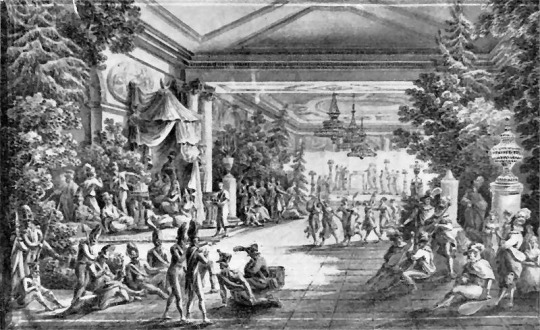
The feast arranged on occasion of prince Jozef’s birthday in the former royal library at the castle in Warsaw, Zygmunt Vogel, 1808
So it may be stated that prince Józef didn’t marry Madame de Vauban because she wasn’t eligible, and didn’t choose any other woman because he didn’t want to.
Ok, you may ask, and what about Zofia Czosnowska, the woman who gave birth to Poniatowski’s second son?
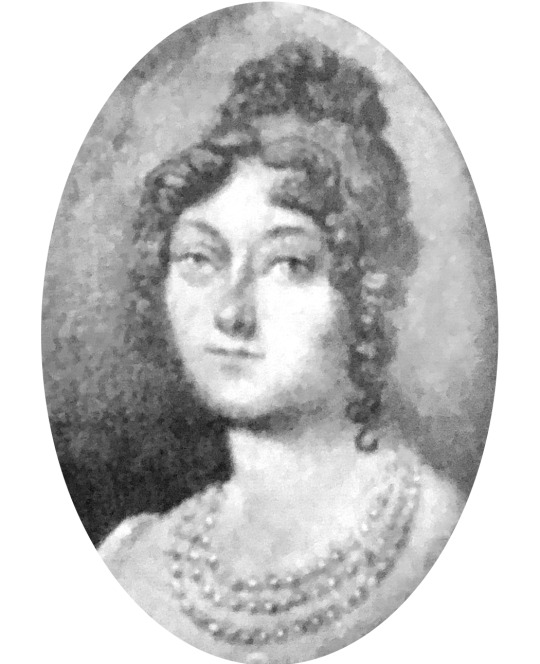
An unknown painter, a miniature portrait of Zofia Czosnowska
Considering this lady we first need to keep in mind that she herself was also married. (And though she separated from her first husband even before she became Pepi’s mistress, their formal divorce happened much after Poniatowski’s death, she during the time of his life Zofia Czosnowska wasn’t free either.)
An aside I couldn’t help but write: with all Pepi’s feelings towards beautiful Zofia, her appearance in his life didn’t change prince Józef’s lifestyle. As if nothing had happened Henriette de Vauban continued to live in Poniatowski’s house, prince Józef mentioned her in his will of 1812, and even shortly before his death he is recalled to say that “When it comes to dying ... to the afterlife I will take with me the unearthly smile of Henrietta ...”. All this IMHO eloquently says whom he really was attached to.
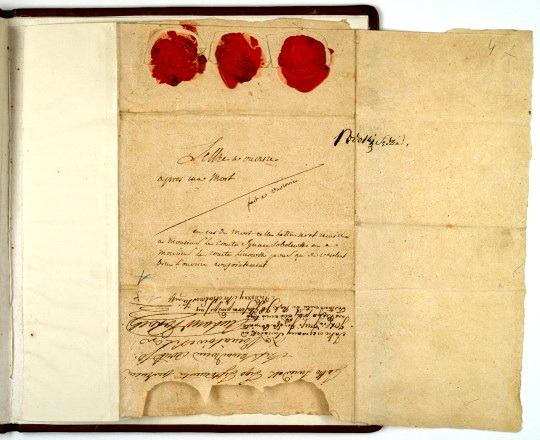
Poniatowski’s will
And there is one more thing we should take into account when looking at prince Józef’s later years. Namely - the creation in 1807 the Duchy of Warsaw.

Napoleon issuing the Constitution of the Duchy of Warsaw by Marcello Bacciarelli (1811)
Because this event, definitely positive for prince Józef’s motherland, simultaneously turned him from a private person to a public one, with all the consequences. And though Napoleonic code, from one hand, allowed divorces, the emperor, on the other hand, preferred to arrange marriages to his people by himself. Which means that had prince Józef acquired a desire to marry a woman he liked he first should have persuaded Napoleon to approve such a choice. And this again put Poniatowski in a kinda gloomy state like it had been years ago when he was dependent on the wishes of his monarch. And this fact may in my opinion served an explanation if to ask why Pepi didn’t divorce one of his mistresses from her husband and marry her...
And the last but not the least. Yes, by many people prince Józef is thought to have be a womanizer, but the more I learn about him the am I becoming convinced, that this might been a kind of “exaggeration”.
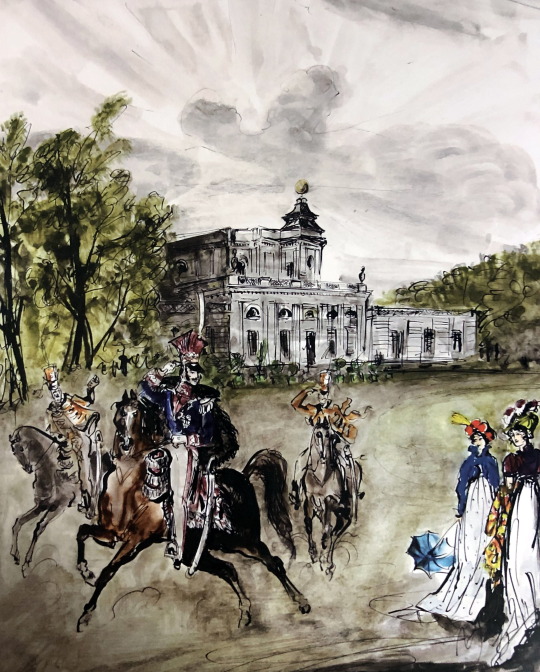
Antoni Uniechowski, prince Józef Poniatowski in Jabłonna, 1975
Because many a diarists recall that “he liked women, and women liked him”, but precise names are rarely mentioned, and if to count the ones of Poniatowski’s proven “love interests” the number is in fact not very high (especially to compare with such known “ladies' man” from the epoch like Napoleon, Talleyrand, Murat etc..)
#Poniatowski#józef poniatowski#józef poniatowski’s women#henriette de vauban#zofia czosnowska#karolina von thun
15 notes
·
View notes
Photo

Princess Elżbieta Izabela Czartoryska (21 May 1736 – 11 November 1816), better known under her married name of Izabela Lubomirska, was a Polish noblewoman.
#Elżbieta Czartoryska#House Czartoryski#Izabela Lubomirska#XVIII century#XIX century#people#portrait#paintings#art#arte
24 notes
·
View notes
Photo

Archduchess Mechthildis of Austria, Princess Czartoryska (1891-1966).
She was a daughter of Archduke Carl Stephen of Austria Teschen and a first cousin of King Alfonso XIII of Spain. She was a member of the Teschen branch of the House of Habsburg Lorraine and an Archduchess of Austria and Princess of Hungary, and Bohemia by birth. In 1913 she married Prince Olgierd Czartoryski. The couple had four children and lived in Poland until the outbreak of World War II when they emigrated to Brazil.
#Archduchess Mechthildis of Austria#Carl Pietzner#erzherzogin#austria teschen#house of habsburg lorraine#princess czartoryska#polish aristocracy#kingdom of poland
12 notes
·
View notes
Photo
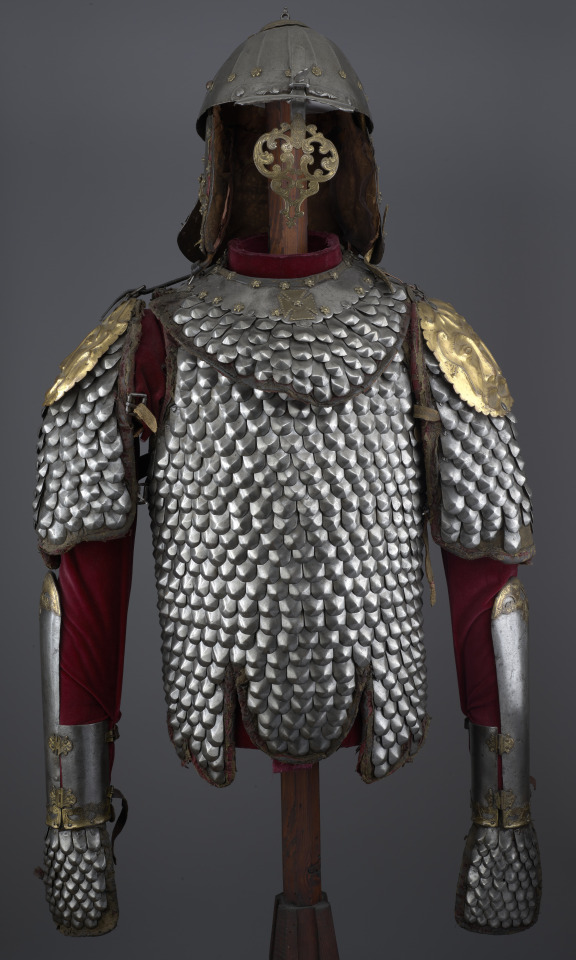
A Hussar’s scale armor, known as a Karacena, Poland, ca. 1645-1683, housed at the Czartoryski Museum, Krakow.
#armor#armour#scale armor#karacena#europe#european#poland#polish#early modern#czartoryski museum#art#history
1K notes
·
View notes
Text

Prince Józef Poniatowski, by an unknown artist; dated between 1800-1813. Currently housed in the Czartoryski Museum in Kraków.
[Source]
21 notes
·
View notes
Text
A list of 100 remarkable women from Polish history - for the anniversary of the 100 years of Polish independence!
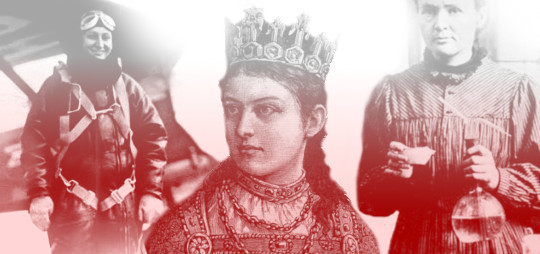
My random choice of 100 notable, inspirational and controversial women known from the history of Poland - people of various different backgrounds and occupations, and with interesting, happy or tragic stories.
If you think I missed an important person you adore or feel inspired by (there are so many more I could include below!), then feel free to expand the list by adding an extra in the reblogs!
(you can click the links under their names to read a bit more, however some of them point to Polish articles only - sorry! I’m hiding the list under ‘read more’ for the reblogs because it’s obviously too long to be browsed comfortably on the dashboard!)
Jadwiga of Poland (1384-1399), who was crowned with the title of ‘King’ during an era when female rulers were relatively uncommon in Europe. She donated most of her personal wealth (including royal insignia) to charity and education, funding and restoring many schools and hospitals, and focused on maintaining peace and development during her rule.
Nawojka (14th/15th-century), who was a semi-legendary woman known to attend studies at the University of Kraków (later known as Jagiellonian University) in the 15th century, which she entered illegally dressed as a boy. She is considered to be the first historically acknowledged female student and teacher in Poland.
Magdalena Bendzisławska (17th/18th century), who was the first historically attested female surgeon in Poland. The dates of her birth and death are sadly unknown, and the main document confirming her existence and profession is a diploma issued by King Augustus II the Strong in the year 1697. She took over the role from her husband after he passed away, and she worked as the chief surgeon at the famous salt mine in Wieliczka.
Maria Skłodowska-Curie (1867-1934), who was a Polish and naturalized-French physicist and chemist, the first woman to win a Nobel Prize (which she got along with Pierre Curie and Henri Becquerel) – the only woman to win the prize in two fields, and the only person to win in multiple sciences. She was the first scientist who conducted pioneering research on radioactivity, and she discovered the elements radium and polonium (the second named after her beloved home country).
Emilia Plater (1806-1831), who was a Polish-Lithuanian noblewoman and a revolutionary fighter in the partitioned Polish-Lithuanian Commonwealth. She fought in the November Uprising of 1830, during which she raised a small unit and received the rank of a Captain in the Polish-Lithuanian insurgent forces. She is a national heroine in Poland, Lithuania, and Belarus, all formerly parts of the Polish-Lithuanian Commonwealth.
Irena Sendler (1910-2008), who was a nurse working in Warsaw when WW2 started. She joined the secret Polish resistance organization Żegota (codename for 'Council of Aid to the Jews’). Despite many dangers she managed to rescue around 2,500 Jewish children by smuggling them out of the Warsaw Ghetto in occupied Warsaw, with the assistance of other members of Żegota. She’s on the list of the Righteous Among the Nations.
Maria Szymanowska (1789-1831), who was a skillful composer and one of the first professional virtuoso pianists of the 19th century. She toured extensively throughout Europe during the 1810s and was one of the first pianists to perform a memorized repertoire in public. She is known as the first female composer from Poland to achieve both national and international recognition.
Narcyza Żmichowska (1819-1876), who was a novelist and a poet, considered the precursor of the organized feminism movement in Poland. She inspired and co-founded a group called Entuzjastki (transl. Enthusiasts, which was a progressive association founded in 1830 in Warsaw by a group of women intellectuals in favor of equal rights for men and women). She was among many Polish intellectuals exiled after the failed November Uprising of 1830, after which she settled in Paris where she enrolled at the Bibliothèque Nationale, becoming one of the first women at the French Academy ever. Her first published novel was Poganka (The Heathen) in which she expressed interest in her female friend Paulina Zbyszewska. She was deemed an 'eccentric’, smoked cigars (prohibited for women at that time), and refused to marry. After returning to Poland she founded a group of suffragettes in Warsaw, active in the 1840s, who also took part in anti-tsarist activities.
Klementyna Hoffmanowa, nee Tańska (1798-1845), who was a writer, translator, and editor. She was the first woman in Poland to fully support herself financially from writing and teaching, and to consider herself primarily a writer by a profession. In 1831 she moved to Dresden and later to Paris, and was later called 'the Mother of the Great Emigration’ (mass emigration or exile of the Polish elites, mainly to Western Europe, after the failure of the anti-tsarist November Uprising of 1830 during the time Poland was under Partitions).
Simona Kossak (1943-2007), who was an award-winning scientist and ecologist. She spent over 30 years living in a hut in the Białowieża wilderness, Europe’s oldest primeval forest located on the border between Poland and Belarus where she grew close to the wild animals to the point it looked like she could understand their language, which gave her the nickname 'witch’.
Bona Sforza (1494-1557), who was a member of the Milan-based House of Sforza and became the Queen of Poland and Duchess of Lithuania by marriage to King Sigismund I the Old. She was known for her ambitious and energetic nature, ensuring a strong political position on the Polish court almost right from the beginning of her marriage. She was responsible for many economic and agricultural reforms implemented in Poland and Lithuania, eventually making her the richest landowner in the Grand Duchy.
Princess Izabela Czartoryska (1746-1835), who was a writer, art collector, and prominent figure of the Enlightenment movement. Her palace was an important political and intellectual meeting place, known as one of the most liberal and progressive court in the pre-Partitioned Commonwealth. She was the founder of Poland’s first museum, which she called the 'Temple of the Sibyl’ or 'Temple of Memory’ (later moved to Kraków where it exists under the name of Czartoryski Museum).
Countess Karolina Lanckorońska (1898-2002), who was an art historian and philanthropist. During WW2 she was an anti-Nazi and anti-communist resistance fighter of the Polish underground, and survived a German concentration camp for women (as a political prisoner). After the war she refused to live in Poland under the communist rule and spent most of her life abroad as a political émigré. She inherited her family’s enormous art collection, which she donated to the Polish state only after 1989 – after Poland underwent a democratic transition.
Elżbieta Zawacka (1909-2009), who was a Polish university professor, scouting instructor, SOE agent, and freedom fighter during WW2 (using the codename 'Zo’). She was the only woman in the elite special unit Cichociemni ('Silent Unseen’) of the Polish underground, served as a courier carrying letters outside of the German-occupied Poland, and fought in the 1944 Warsaw Uprising.
Irena Kempówna-Zabiełło (1920-2002), who was a skilled pilot and renowned glider. In 1949 and 1950 she established two world speed records for women: over a triangular course of 100 km and over a straight distance of 100 km.
Elżbieta Sieniawska (1669-1729), who was a noblewoman, Grand Hetmaness of the Crown, and renowned patron of arts. She was described as a 'lady of great wisdom, reason and shrewdness’, and she was deployed by her husband on diplomatic missions, duties, and obligations that he could not manage. As an influential woman politician in the Polish–Lithuanian Commonwealth during the reign of Augustus II the Strong, she was deeply embroiled in the Great Northern War and in Rákóczi’s War for Independence. She was considered the most powerful woman in the Commonwealth and called the ‘uncrowned Queen of Poland’.
Michalina Wisłocka (1921-2005), who in the 1970s published the first guide to sexual life in communist countries, focusing on women’s needs. She fought for equal rights for women in a bid to fully participate in public, political, and economic life at that time.
Tamara de Lempicka (1898-1980), born Maria Górska, who was a renowned painter of the Art Deco movement and gained international fame for her decorative portraits. She is known for her unconventional style of self-expression, and her art manifested bisexual, bold, liberated female sexuality.
Zofia Stryjeńska (1891-1976), who was a painter, graphic designer, illustrator, and stage designer, one of the best-known Polish women artists of the interwar period. In 1911 she was briefly studying abroad at the Academy of Fine Arts in Munich, where she enrolled using the name of her brother and dressed like a boy, because at that time the academy did not accept women. She grew in fame in Poland during the interwar period for her style inspired by the Polish folklore and Slavic paganism.
Jadwiga Grabowska (1898-1988), who was nicknamed the 'Godmother of the Polish fashion industry’ during communist rule. She promoted the modern 'tomboy’-ish style of the 1950s and 1960s and was responsible for persuading the state-owned textile industries to produce a wide range of colorful fabrics available for common women, coming under constant criticism from supervisors and governmental authorities.
Pola Negri (1896-1987), who was a stage and film actress during the silent and golden eras of Hollywood and European film, famous for her femme fatale roles. She was the first European film star to be invited to Hollywood and became one of the most popular actresses in the American silent film era. She started several important women’s fashion trends at that time that are still staples of the fashion industry.
Maria Konopnicka (1842-1910), who was a poet, novelist, children’s writer, translator, journalist, and activist for women’s rights and for Polish independence under the Partitions, as well as an activist against the repression of ethnic and religious minorities in Prussia. Her life was turbulent, and her sexual orientation is widely speculated on by modern historians. After an unhappy marriage, she spent most of her late life living in a romantic relationship with the painter and feminist Maria Dulębianka.
Maria Dulębianka (1861-1919), who was a social activist, feminist, painter, writer, and publicist. She was a prominent representative of the suffragette movement. She promoted women’s right to political participation and in 1908 enrolled herself as a candidate to the Galician Parliament (in the Austrian partition of Poland), where she was denied ‘due to formal reasons’. Her social work included founding of many children’s nurseries and kitchens for the poor, as well as setting up a help and activity club for homeless street kids. She was known to wear ‘masculine’ clothes.
Maria Dąbrowska, nee Szumska (1889-1965), who was a writer, novelist, essayist, journalist, and playwright, author of the historical novel Noce i dnie (Nights and Days). She was nominated for the Nobel Prize in Literature four times. She specialized in the themes of human rights and human potential for development under life hardships. In her personal life, she is considered one of a few historically-confirmed Polish bisexuals. She maintained long-term open relationships – first a marriage with publicist Marian Dąbrowski until his death in 1925, then a concubinage with painter Henryk Szczygliński until his death in 1952. She spent the remaining years of her life living in a romantic relationship with a writer Anna Kowalska (also a widow at that time), whom she had first met during the WW2 period, when they had fallen in love. In her articles published for the Polish press during the interwar period she openly advocated tolerance for homosexuality and diversity of society.
Grażyna Bacewicz (1909-1969), who was a composer and violinist. She is only the second Polish female composer to have achieved national and international recognition. She belonged to a large group of Polish composers from the interwar and post-war years creating in the neoclassical style. Despite constant pressure from the postwar communist government, she never composed any socialist realist work on their orders.
Anna Jagiellon (1523-1596), who was the Queen of Poland and Grand Duchess of Lithuania. Despite multiple proposals, she remained unmarried until the age of 52. Then she was elected, along with her then-fiancé Hungarian noble Stephen Báthory, as the co-ruler of the Polish-Lithuanian Commonwealth. Their marriage remained rather a formal agreement for the following 10 years, until the death of Báthory. She didn’t take the opportunity of claiming the throne for herself. During her reign she spent most of her time in Warsaw on local administrative matters and sponsoring construction works, adding greatly to the development of the city.
Irena Krzywicka (1899-1994), who was a controversial Polish-Jewish feminist, writer, translator, and activist for women’s rights. During the interwar period she became one of the most famous feminists in Poland, spreading knowledge about sexual education and birth control. She was considered a scandalist at that time as, she talked openly about abortion, women’s sexuality, and homosexuality.
Helena Modrzejewska, known also as Modjeska (1840-1909), who was a renowned actress specializing in Shakespearean and tragic roles. She emigrated to the USA in the 1870s where, despite her imperfect accent, she achieved great success, eventually gaining a reputation as the leading female interpreter of Shakespeare on the American stage. She was a women’s rights activist, describing the difficult situation of Polish women under the Russian- and Prussian-ruled parts of Partitioned Poland. Her speeches led to a Tsarist ban on her traveling to Russian territory.
Hanka Ordonówna (1902-1950), born Maria Anna Pietruszyńska, who was a singer, dancer, and actress, one of the main stars during the interwar period in Poland. In 1931 she became a countess by marriage to Michał Tyszkiewicz, which made her an adored legend among lower classes of society who dreamed about a similar romantic life. Her career ended with the outbreak of WW2. She was arrested a few times as a political enemy and eventually sent to a gulag (Russian labor camp) in Uzbekistan where her chronic lung disease worsened dramatically. She was eventually evacuated to Beirut, where she stayed until her death, hoping to fight the disease.
Maria Pawlikowska-Jasnorzewska (1891-1945), who was a renowned dramatist and poet in Poland, known as the 'queen of lyrical poetry’ of the interwar period and the 'Polish Sappho’. She established herself as one of the most innovative poets of her era, writing about many taboo topics such as abortion, extramarital affairs, and incest, which provoked numerous scandals. Her plays depicted her unconventional approach to motherhood, which she understood as a painful obligation that ends mutual passion. She spoke in support of a woman’s right to choose. She has a minor planet named after her, thanks to the Czech astronomer Zdeňka Vávrová.
Barbara Radziwiłł (1520/23-1551), who was briefly the Queen of Poland and Grand Duchess of Lithuania as the consort of King Sigismund II Augustus (the last male monarch of the Jagiellon dynasty). They married in secret in 1547, after a few years of a love affair, causing a huge scandal. Her life became surrounded by many rumors and myths, and she became the heroine of many legends that inspired numerous paintings, literary works, and films.
Maria Wittek (1899-1997), who was a soldier promoted to brigadier general in the Polish Army, the first woman ever to acquire that rank in Poland (but only in 1991, after the collapse of the communist government). At the age of 18 she joined the underground Polish Military Organization (Polska Organizacja Wojskowa) and completed the NCO (non-commissioned officer) training course. During the First World War she fought against the Bolsheviks as a member of the Voluntary Legion of Women. Between 1928-1934 she was the commander of the Female Military Training (Przysposobienie Wojskowe Kobiet – an organization training women for military service. During WW2 she became the commanding officer of the Women’s Military Assistance Battalions and fought in the 1944 Warsaw Uprising. After the war she initially returned to her previous position as a head of the women’s military division, but in 1949 she was arrested by the communist authorities and spent several months in prison. After her release she worked in a newspaper kiosk. She never married.
Maria Kazimiera d’Arquien (1641-1716), born Marie Casimire Louise de La Grange d'Arquien (and known in Poland by the diminutive name 'Marysieńka’) who was the Queen Consort to King Jan III Sobieski. They were remembered as a compatible couple, rare in those times for high-status marriages. Their love letters reveal authentic feelings between the loving pair, but also their reflections on contemporary issues and difficulties, as well as down-to-earth matters concerning the royal household and little day-to-day decisions made by the monarch, who often consulted his wife about them.
Magdalena Abakanowicz (1930-2017), who was a sculptor and fiber artist, widely regarded as one of Poland’s most internationally-acclaimed artists. She’s known for her experimental sculptures, such as the series called Abakans: gigantic three-dimensional fiber works created in the 1960s that placed her in the international art world as one of the greatest and the most influential figures of that time. She created many large-scale projects such as the art installation Agora, consisting of 106 headless and armless iron sculptures located in Grant Park in Chicago.
Anna Jabłonowska (1728-1800), who was a magnate and politician, referred to as one of the most significant women of 18th-century Poland. She was known for remarkable activity on her estates, introducing numerous management reforms and funding hospitals, factories, schools, and a printing press, all with the wellness of the people living on her estates in mind. She was known for her personal interests in science and botany. Her naturalist collection was one of the best in Europe.
Olga Boznańska (1865-1940), who was a notable painter combining the impressionism and realism movements. She was known for her unique style and intimate portraits, emphasizing the spirituality of her models. She was widely acclaimed during her lifetime and today is regarded as one of the most significant Polish painters.
Anna Dorota Chrzanowska (17th century), who became a heroine of the Polish–Ottoman War (1672–76). She was the second wife of Captain Jan Samuel Chrzanowski. During the war they were stationed in Trembowla Castle, besieged by the Ottoman Turks. The castle managed to withstand many attacks, and the defenders underwent an internal crisis only after several days when shortages of food and water became severe. The captain decided to surrender, but his wife disagreed with his decision – she urged the defenders to carry out a daring attack on the Turkish positions, which is said to have raised the morale among the Poles greatly, and led the soldiers out herself, resulting in heavy losses among the Ottomans. Due to her act she has been called the 'Polish Joan of Arc’.
Anna Rajecka (c.1762-1832), later known as Madame Gault de Saint-Germain, who was a portrait painter and pastellist, recognized for her talent and raised as a protégé of King Stanisław August Poniatowski. She was one of a few women who frequently attended the king’s famous Thursday Dinners, and therefore she was rumoured to be his illegitimate daughter or his mistress (neither true as far as historians have researched). In the early 1780s, she was enrolled at the king’s expense at the art school for females at the Louvre in Paris and stayed in the city after falling in love and marrying a French miniature artist. She became the first Polish woman to have her work presented at the Paris Salon.
Jadwiga Szczawińska-Dawidowa (1864-1910), who was an activist, publicist, and teacher. She founded the so-called Flying University, an underground educational organization primarily for women. It operated in secret in private apartments in Warsaw (changing the location frequently – hence the university’s name) at the time when that part Poland was under control of the Russian Empire, providing educational courses outside the occupiers’ censorship at the time. During the 20 years of the university’s existence, around 5,000 women graduated from it, among them Maria Skłodowska – later a Noble prize winner.
Countess Maria Walewska (1786-1817), who was a Polish noblewoman remembered most for her long-lasting affair with Emperor Napoleon I. According to his memoirs, Napoleon remembered her for her extraordinary beauty after only a brief meeting in 1806, and requested to meet her again. She was said to be pious for her time and status, and admitted to have forced herself to get involved with Napoleon for purely patriotic reasons. She sought to influence his Eastern European policy, and during the affair she convinced him to create the Duchy of Warsaw.
Katarzyna Kobro (1898-1951), who was a notable avant-garde sculptor of the constructivist and abstract movements. She co-founded a few major Polish and international modernist artistic groups in the 1920s and 1930s. She signed a number of manifestos, including the early-modern Dimensionist Manifesto (concerning a “new conception of space and time”). She was most famous for her “spatial sculptures” – combinations of rigorously architectural structures, sculptural forms, and constructivist aesthetics.
Zofia Nałkowska (1884-1954), who was a prose writer, dramatist, and prolific essayist. During the interwar period she became one of Poland’s most distinguished feminist writers of novels, novellas, and stage plays characterized by socio-realism and psychological depth. In her writings, Nałkowska boldly tackled subjects which were difficult and controversial at that time, such as eroticism.
Jadwiga Sikorska-Klemensiewiczowa (1871-1963), who was a pharmacist, and one of the first official female students in the history of Jagiellonian University, after graduating from the underground Flying University. She became the first chairwoman of the General Association of Working Women in Poland.
Scholastyka Ostaszewska (1805-1851?), who was a social activist and an underground independence activist. She belonged to the group Entuzjastki (a progressive association founded in 1830 by a group of female intellectuals in favor of equal rights for men and women). Around 1848 she was active in a female branch of the Polish People’s Spring movement, which fought for independence from Partitions. In 1851 she was put under strict police supervision by the Russian occupants. Her date of death is unknown.
Alina Szapocznikow (1926-1973), who was a sculptor and illustrator representing the surrealist, nouveau realist, and pop art movements. She is mentioned among the most important Polish artists of her generation. She was born to a Polish-Jewish family and survived the Holocaust during the Nazi Germany’s occupation of Poland. That period of her life made a huge impact on her art. She created a visual language of her own to reflect the changes going on in the human body and introduced new sculpting materials and forms of expression.
Zofia Daszyńska-Golińska (1866-1934), who was a socialist politician, suffragette, university professor, and early female senator in interwar Poland. She was a member of a number of leading feminist organisations, including the Little Entente of Women.
Kazimiera Bujwidowa (1867-1932), who was a notable feminist and suffragette in Poland. She was involved in campaigns to improve general education and literacy in Warsaw and Kraków, and she organized the first Kraków Reading Room for Women. She is credited with starting the first junior school for girls and for campaigning for women’s admission to Jagiellonian University as students (as they got in 1897).
Maria Kokoszyńska-Lutmanowa (1905-1981), who was a notable logician and author of studies in philosophy, methodology, epistemology, and semantics. For some years after WW2, she was viewed as dangerous enough by the communist government to be deprived of the right to teach philosophy, being able to teach logic only.
Gabriela Zapolska (1857-1921), who was a novelist, playwright, naturalist writer, feuilletonist, theatre critic, and stage actress. She received the most recognition for her socio-satirical comedies in which she mocked the moral hypocrisy of the upper classes (she herself was born to a wealthy family of Polish landed gentry). Her most famous work, The Morality of Mrs. Dulska (written in 1906), became a key work in early modernist Polish drama. In it, she criticized the hypocritical double standard of sexual behaviours and two-faced family values.
Stefania “Barbara” Wojtulanis (1912-2005), who was an experienced glider, balloon and motor aircraft pilot, and parachute-jumping instructor (she received licenses for all of the above before her 24th birthday). At the start of WW2 she was promoted to the rank of first lieutenant, assigned to the general staff of the Polish army, and flew missions to deliver fuel to the fighter brigade defending against the 1939 attack on Warsaw. She was evacuated to Great Britain in 1940 and later assigned to the Air Transport Auxiliary as a ferry pilot, where she logged over 1,000 hours of flying. She was twice awarded the Silver Cross of Merit for her services during the war and was honoured at the International Forest of Friendship with a plaque for her aviation achievements.
Helena Mniszkówna (1878-1943), who was a novelist and author of several books popular in pre-war Poland. She debuted with the novel Trędowata (The Leper, 1909) that brought her to prominence and became one of the most famous Polish melodramas (later in the 20th century dramatised four times by different directors). In 1951 all of her works were banned by communist censors in People’s Republic of Poland due to their bourgeoisie content, which they deemed 'may have been harmful for society’.
Eleonora Ziemięcka (1819-1869), who was considered the first female philosopher in Poland. She bravely entered that field at the time it was reserved exclusively for men. She played a significant role in the history of Polish philosophical thought at the time, representing the so-called Polish religious thought (or Polish Messianism). Her Thoughts on the Upbringing of Women, published in 1843, was the first book in which the issues of reforming women’s education and their need to develop the mind were addressed.
Maria Ilnicka (1825-1897), who was a poet, novelist, translator, and journalist. In 1863/1864 she took part in the January Uprising against the Russian Empire, as an archivist of the underground Polish National Government. She was promoting feminism and organic work. In 1865 she was the editor-in-chief of a weekly magazine for woman, Bluszcz.
Wanda Rutkiewicz (1943-1992), who was a computer engineer and a mountain climber. She is known as the third woman, the first Pole, and the first European woman to reach the summit of Mount Everest, which she accomplished in 1978. In 1986 she became the first woman to successfully climb K2, what she did without supplemental oxygen.
Zofia Rogoszówna (1881-1921), who was a poet, translator, and writer of children’s literature. She was the first female writer in Poland who adapted rural short stories and rhymes into the literature for children, which she compiled in three tomes over time. She is considered a valuable researcher of folklore.
Jadwiga Piłsudska (1920-2014), who was a pilot. She obtained her first pilot’s licence in 1937 (at the age of 17), then her aircraft pilot’s license in 1942, and served in the Air Transport Auxiliary during WW2. As a daughter of the Marshal Józef Piłsudski, she remained in Great Britain after the war as a political émigré. She never accepted British citizenship and used a stateless person passport, valid for all countries in the world except the communist People’s Republic of Poland. She was able to return safely to her country only in 1990, after the collapse of the communist government.
Lucyna Ćwierczakiewiczowa (1829-1901), who was a writer, journalist, and author of several popular Polish cookbooks. After 1875 she devoted herself to preparing a yearly publication, Kolęda dla Gospodyń (A Housewife’s Carol), a calendar filled with cooking recipes, women’s suffrage ‘propaganda’, and short novels and poems. Her books made her the best-selling author in pre-war Poland. By the year 1924 her first cookbook was issued 23 times, with more than 130 thousand copies sold worldwide – more than all the books by the novelists and Nobel Prize laureates Henryk Sienkiewicz and Bolesław Prus combined had sold before that year.
Anna Leska (1910-1998), who was a skilled pilot assigned to the Polish Air Force HQ squadron to fly liaison missions. After the 1939 defeat of Poland, she was evacuated to Great Britain and started ferrying aircraft with the Air Transport Auxiliary (ATA) where she eventually became a flight leader in charge of eight female ferry pilots, whom she instructed and assisted. She was one of only three Polish women serving in the ATA, and the only woman flying in the ATA to receive the Royal Medal.
Zofia Sokolnicka (1878-1927), who was a social and political activist and member of parliament after Poland regained independence in 1918. During the First World War she worked as a courier – thanks to her outstanding memory, she could convey detailed political information and instructions without transporting any papers or notes.
Izabela Elżbieta Morsztyn (1671–1756), who was a noblewoman, known for her political salon and role in the Familia (an 18th-century political party or fraction led by the House Czartoryski and allied families). In 1736 in Warsaw, she established the first political salon, where politicians met and the Familia party conferred. Women played a significant role in those meetings.
Princess Konstancja Czartoryska (c.1696-1759), who was a noblewoman, later known as the mother of King Stanisław August Poniatowski. She was described as a serious person with an interest in education and politics, strongly devoted to her mother Izabela Elżbieta Morsztyn. She played a political role as a driving force within the Familia (political party led by House Czartoryski). She acquired a great influence within the family and led the political careers of her spouse and brothers. At the interregnum and royal election after the death of King Augustus II in 1733 she, alongside her mother and Zofia Czartoryska, were described as the most influential people in the Familia party, and she was represented her faction during negotiations (e.g., with a French ambassador).
Stefania Sempołowska (1869-1944), who was an educator, social activist, and writer. At the age of 17 she passed the Teacher Patent at the Government Commission in Warsaw. She became a teacher and children’s rights activist, and was the author of many school books. During the Revolution in the Kingdom of Poland (1905) against the Russian Empire, she initiated a congress of delegates of the Polish teacher organizations, in which solidarity with the protesting common people was declared and the teachers decided to run lessons in the Polish language despite Russian prohibition.
Faustyna Kowalska (1905-1938), born Helena Kowalska, who was a nun and mystic. Throughout her life, she reported having visions of Jesus and conversations with him, which inspired the Roman Catholic Divine Mercy devotion and earned her the title of 'Apostle of Divine Mercy’. Based on her descriptions, the famous Divine Mercy image was created (she herself didn’t know how to paint, so she asked a few painters to recreate her vision on canvas, resulting in a few known versions of the scene). She was canonized in 2000.
Helena Radlińska (1879-1954), who was a teacher, historian, and librarian, and the creator of the Polish school of social pedagogy. She promoted librarian pedagogy, readership, the creation of home book collections, and access to literature for different social groups (especially those from culturally underprivileged groups).
Irena Morzycka-Iłłakowicz (1906-1943), who was a Polish second lieutenant of the National Armed Forces and an intelligence agent. During WW2 she was active in the Polish resistance movement and conducted military, economic, and intelligence reconnaissance. Her section was destroyed by the Nazi Germans, followed by numerous arrests of underground activists. She was captured in October 1942 and underwent harsh interrogations. She was rescued by fellow underground agents: first a bribed guard put her in the group of non-political prisoners to be transported to the Majdanek camp, from where she was rescued by agents dressed in stolen German uniforms. She continued her work as an agent. In the days before her death she was involved in an action against a radio contact point which supported Soviet Russian activities in Poland. She was murdered in 1943 in unknown circumstances after being summoned for an important meeting. Because the Nazi Germans often sent agents to family funerals (and other ceremonies), she was buried under a false name, and her husband participated in the funeral dressed as a gravedigger; her mother as a cemetery helper. Only in 1948 did her mother place a plaque with her true name on the grave.
Maria Grzegorzewska (1888-1967), who was a Polish educator and teacher. She introduced and developed the special education movement in Poland. Maria Grzegorzewska worked out the original teaching method, called “the methods of working centers” focused on a creative work environment, which is still used in today’s special needs education. She was the first to start systematic research on pedagogical issues of the disabled in Poland.
Agnieszka Osiecka (1936-1997), who was a poet, writer, author of theatre and television screenplays, film director, and journalist. She was a prominent Polish songwriter, having authored the lyrics to more than 2,000 songs, and is considered an icon of Polish culture.
Barbara Sanguszko (1718-1791), who was a noblewoman, poet, translator, and moralist during the Enlightenment in Poland. She organised and hosted a salon in Poddębice, where the gathering of intellectuals, artists and politicians was modelled after French 18th-century salons. Sanguszko was known for her piety, generosity and philanthropy. She not only restored many Catholic churches and convents, but laid the foundations of new religious houses, including also Orthodox churches. Having in mind the future of her children and of the family estate, she took an active part in the political life of her country. She took it upon herself to attend parliaments and tribunals. Her soirées spawned the future theatrical initiatives of the Lazienki Palace. She hosted grand occasions in the Saski Palace, including illuminations, concerts and balls for dignitaries of the period.
Barbara Kwiatkowska-Lass (1940-1995), who was a notable film actress. Raised in communist Poland, she took an opportunity to leave the country in 1959 to pursue her career in the West and starred in a few major Italian, German, and French films. She actively opposed the communist regime and cooperated with the United States-controlled Radio Free Europe/Radio Liberty, which transmitted anti-communist propaganda, information, and programmes free from censorship to Poland.
Anna Iwaszkiewicz (1897-1979), who was a writer and translator, born to the family of a wealthy entrepreneur. She entered Polish artistic circles by marriage to Jarosław Iwaszkiewicz (then a novice writer) and they both were known for their turbulent bisexual orientation. During WW2 she and her husband actively helped rescue Jewish people from the Nazi German occupiers by hiding them, finding new shelters, and providing them with funds and with false documents. She is on Israel’s list of the Righteous Among the Nations.
Katarzyna Ostrogska (1602–1642), who was a Polish–Lithuanian noblewoman, known as the founder of the city of Biała (modern Janów Lubelski). She was married to the nobleman and voivode Tomasz Zamoyski. Widowed in 1638, she took over management of the Zamoyski estates. In 1640 the king granted her the privilege to found the city of Biała, including the right to organize the government of the city and appoint its officials. She wrote several documents regulating life in her city.
Alina Centkiewicz (1907-1993), who was a writer and explorer, as well as the co-author of many travel books (written with her husband). She was best known for her descriptions of the Antarctic Circle region. In 1958 she was the first Polish woman (and the sixth woman in the world) to explore Antarctica.
Wanda Gertz (1896-1958), who was a soldier and independence activist. Born to a noble family, she began her military career in the Polish Legion during the First World War dressed as a man, under the male pseudonym of Kazimierz Zuchowicz, or 'Major Kazik’. With the outbreak of WW2, thanks to her experience and skills she became an officer of an all-female battalion in the underground Home Army, where she took the codename 'Lena’, and created a female division and sabotage unit. She was captured after the failed 1944 Warsaw Uprising and remained imprisoned in various German camps until the liberation by the US army in 1945. After the war she travelled throughout Germany and Italy in a search of displaced Polish women, joining the Polish Resettlement Corps. After demobilisation she worked in a canteen until her death.
Ewa Szelburg-Zarembina (1899-1986), who was a novelist, poet, and screenplay writer, best known as the author of numerous works for children. She co-initiated a fundraising program that eventually led to the construction of the Children’s Memorial Health Institute, the largest and the most modern centre of paediatric care for children in Poland.
Anna Kostka (1575–1635), who was a Polish–Lithuanian noblewoman. She inherited the city of Jarosław as well as several other areas from her mother. After being widowed in 1603, she lived an independent life as the manager of her and her children’s dominions. She financially supported the University of Jarosław, introduced the Benedictine Order to the city, protected the Jesuits, commissioned several (later famed) art objects for the churches, and became known for her charity toward the poor.
Seweryna Szmaglewska (1916-1992), who was a writer, known for books for both children and adults alike. During WW2 she was arrested by the Nazi Germans in a łapanka (street roundup), and sent to the Auschwitz-Birkenau concentration camp as a political prisoner. She survived three years in the camp, and after the war she was one of very few Poles to testify at the Nuremberg Trials. She collected her memoirs in a few books, the most famous being Smoke over Birkenau.
Janina Lewandowska (1908-1940), born Janina Dowbor-Muśnicka, who was a second lieutenant in the Polish air force, devoted entirely to her flying career. After the outbreak of WW2 she was drafted for service in the 3rd Regiment, but her unit was taken hostage by Soviet forces in unknown circumstances. She was one of only two officers in the imprisoned group. She died in the infamous 1940 Katyn Massacre, and her remains were identified only in 2005.
Wanda Błeńska (1911-2014), who was a tropical disease expert and missionary who succeeded in developing the Buluba Hospital in Uganda, an internationally recognized centre for leprosy treatment.
Aleksandra Zagórska (1884-1965), who was am independence activist and soldier. During the First World War she commanded the women’s intelligence service in the Polish Legions. In 1918 she formed the female paramilitary organization Ochotnicza Legia Kobiet (Voluntary Legion of Women) and served as the organization’s commander. In her military career she was eventually promoted to the rank of lieutenant colonel. During WW2 she joined the resistance as part of the left-leaning Coalition of Independence Organisations. After the war she lived under the pseudonym 'Aleksandra Bednarz’ to avoid the communist government’s persecution on account of her history of independence activism.
Maria Nostitz-Wasilkowska (1858-1922), who was a painter and portrait artist, nicknamed ‘Charmante Polonaise’ by the upper classes. Her favourite medium was pastels, and she specialized in female portraits, valued for her ability to interpret the model’s psychology through subtle color and light. Her portraits were often described as 'living and vibrant’, as if she caught the model in an ephemeral moment. She graduated with honors from the art academy in Saint Petersburg and paved her way to become a favourite artists of the elites in Saint Petersburg and Warsaw, travelling between those cities during her lifetime. Sadly, not many portraits by her have survived to the modern day.
Lena Żelichowska (1910-1958), who was a dancer and actress, one of the most popular in interwar Poland. She debuted on screen in 1933 and quickly gained popularity, becoming one of the most promising film stars in Poland. Before the outbreak of WW2 she managed to appear in 14 movies and starred in numerous theatre plays. During the early stages of the war, she and her husband Stefan Norblin (a notable art deco artist) escaped Poland, and only his reputation as a painter opened many doors, including those of the royal family in Iraq and the Maharajahs in India, where they lived until the end of the war. In the late 1940s they eventually settled in the US. Due to her accent she never managed to return to acting.
Krystyna Skarbek (1908-1952), also known as Christine Granville, who was a WW2 spy working for the British Special Operations Executive. She became celebrated especially for her daring exploits in intelligence and irregular warfare missions in Poland and Nazi-occupied France, and she was one of the longest-serving of all Britain’s wartime women agents. After the war, Skarbek was left without financial reserves or a native country to return to (she didn’t recognize the communist government in postwar Poland). Her life is said to be an inspiration for the fictional characters of Vesper Lynd and Tatiana Romanova in the James Bond novels Casino Royale (1953) and From Russia, with Love (1957).
Teresa Bogusławska (1929-1945) was a promising Polish poet and a participant in the 1944 Warsaw Uprising. She joined the Polish scouts’ underground resistance movement at the age of 12. In 1944 (aged 15) she was arrested by the Nazi Germans while pasting independence slogans on German posters. She was imprisoned and tortured during questioning, and suffered badly from tuberculosis after barely three weeks spent in prison. She was freed, but her health never recovered. During the Warsaw Uprising later that same year, she helped the insurgents by sewing uniforms and arm bands. She died early in 1945, aged 16, from meningitis caused by the tuberculosis.
Anna Pustowójtówna (1838-1881), who was a noblewoman, activist, and soldier, famed for her participation in the January Uprising. She identified herself fully as a Pole despite being a child of a mixed Polish-Russian couple, her father being a high-ranking Russian general. She became an activist for the cause of the Polish independence and sided with the Polish troops during the 1963 January Uprising. She disguised herself as a male soldier and went by the alias 'Michał Smok’ (literal translation: Michael the Dragon). She fought as an assistant to the general Marian Langiewicz. She took active part in a few battles, such as the Battle of Małogoszcz, Battle of Pieskowa Skała, Battle of Chroberz, and Battle of Grochowiska, becoming a living legend of the Uprising (much like Emilia Plater, who became a symbol of the November Uprising c. 40 years earlier).
Maria Piotrowiczowa (1839-1863), who was a January Uprising insurgent, participating in the Battle of Dobra (the Łódź province). Upon news of failures of the ongoing uprising, she decided to support the fighters, cutting her hair and putting on a men’s insurrectionary garment. She joined a small troop led by a man from a nearby manor. At the beginning she was on an auxiliary duty, but when the military situation deteriorated she declared her intention of joining front-line duty. In February of 1863 the Russian troops took her unit’s camping site by surprise. She fought to the very end and stayed on the battlefield, rejecting the suggestions of surrender given to her by Russian officers. With a remaining small group of young people, she bravely defended the troop flag donated to the unit by women from the city of Łódź. Armed with a revolver and a scythe, encircled by Cossacks, she killed one, wounded another, and killed the horse under yet another one before dying from their hands. Her body was pricked with pikes and sabres. The tragedy was magnified by the fact that Maria was pregnant at that time.
Natalia Zarembina (1895-1973), who was a writer and journalist. During WW2 she was also a participant of the underground resistance in occupied Poland: she served as an activist of the Polish Socialist Party – Freedom, Equality, Independence (a WW2 underground resistance party) and as a member of the underground organisation Żegota (Council of Aid to the Jews). In late 1942 she published the book Obóz śmierci (Eng. Death Camp), released by the underground press, which was the first document telling about the German concentration camp of Auschwitz. She included firsthand information based on reports of refugees and people dismissed from the camp. Her book was translated to English in the following year, becoming one of the first reports of the Nazi German atrocities in the occupied Poland, followed by the famous Pilecki’s Report.
Eliza Orzeszkowa (1841-1910), who was a journalist, social activist, novelist, and leading writer of the Positivism movement during the late era of the Partitions of Poland. In 1905, along with Henryk Sienkiewicz, she was nominated for the Nobel Prize in Literature. She authored over 150 powerful works dealing with the social conditions of her occupied country.
Teofila Chmielecka (1590–1650) was a Polish military spouse, married to Stefan Chmielecki. She was known for her dedication to the military ideals and for maintaining the Spartan lifestyle necessary in the army, and came to be known as the ideal role model of a military wife. She displayed her personal courage on several occasions, earning the nickname “The Wolf of the Frontier”.
Teofila Ludwika Zasławska (c.1650-1709), who was a noblewoman known as perhaps the most significant landowner in Poland in her time. She was the daughter of Katarzyna Sobieska (sister of King Jan III Sobieski) and an heiress of the Ostrogski family. She was married twice: to the Great Crown Hetman Dymitr Jerzy Wiśniowiecki, and after his death to Prince Józef Karol Lubomirski. Upon her first husband’s death, she inherited large holdings that included the Baranów Sandomierski Castle (not without a legal fight for those rights). After the death of her brother she became the only heir to one of the largest estates in the Commonwealth, the Ostrogski Ordination, which included several dozen towns. As a result of her second marriage, the large landed estates of the Ostrogski Ordination in Poland were transferred to the Lubomirski family. The combined fortune of the Zasławskis and Lubomirskis would become for a time the largest fortune in the Commonwealth. Her second husband had an ongoing extramarital affair which became public, resulting in her attempting to declare him legally insane. They were formally separated until his death in 1702. During the last years of her life she was involved in charity work, including management and development of schools.
Rozalia Lubomirska (1768-1794) was a noblewoman, most noted for her death. At the age of 19 she was married to Prince Aleksander Lubomirski. They travelled to France but, unhappy in her marriage, she decided to divorce her husband and did not accompany him on his way back to Poland. The time of the French Revolution met her in Paris. She was arrested along with her child and tried for alleged conspiracy against the Revolution. As a result, the 26-year-old princess was sentenced to death and soon beheaded by guillotine, although her guilt was (and remains) widely questioned. The death of a Polish national caused much concern among the Polish nobility who, prior to the Reign of Terror, openly cheered the Revolution. Among those who spoke in her defence was Tadeusz Kościuszko. After her death, Rozalia became the subject of legends. According to one, her ghost appears in the Lubomirski Palace in Opole Lubelskie.
Anna Bilińska-Bohdanowicz (1857-1893) was a painter known for her portraits, painted with a great intuition. Her Self-Portrait with Apron and Brushes (1887) developed a new self-portrait pose by placing the artist in front of a model’s backdrop, thus showing that she is her own model. She was internationally recognized during her lifetime and studied art in Paris. After returning to Poland she intended to open a painting school for women in Warsaw, which would have mimicked the practices of the Parisian academies. However the project was stopped short when the artist fell ill with a heart condition.
Zofia Rydet (1911-1997), who was a professional photographer best known for her project 'Sociological Record’, which aimed to document every household in Poland. She began working on that project in 1978 at the age of 67, taking an enormous collection of nearly 20,000 pictures until her death in 1997. The photos show various informal scenes in different ordinary Polish households, often with the owners among their belongings.
Teofila Certowicz (1862-1918), who was a sculptor and artist. For a brief time she opened and managed her own art school for women in Kraków, the first one of that kind in the city, and invited prominent artists such as Włodzimierz Tetmajer and Jacek Malczewski to teach the girls in her school.
Wanda Telakowska (1905–1986) was an artist best known as the founder of Warsaw’s Institute of Industrial Design. She was a member of an Arts and Crafts collective that encouraged a new artistic identity which included folk art. After the WW2 she joined the communist government in Poland, creating the Bureau of Supervision of Aesthetic Production. As the head of the Bureau, she commissioned artists to design many mass-produced Polish goods, under the motto 'Beauty is for every day and for everybody’. However, some artists were suspicious of collaborating with the communist government during a time of continued political conflict. Ultimately, the Bureau was shut down, as the value of artist designs was not convincing enough to factory owners. She went on to create Warsaw’s Institute of Industrial Design in 1950 and served as its first director. In this role, she 'invited artists, ethnographers, art historians, pedagogues, sociologists, and enthusiasts of folk art to contribute to her institute’s efforts to develop new forms of sociologist culture in collaboration with working women, peasants, and youth.’ She’s known as a promoter of the term ‘industrial design’ in Poland. Some Polish artists have dismissed her legacy as a failed attempt to work with communists.
Zofia Baniecka (1917-1993), who was a member of the Resistance during WW2. In addition to relaying guns and other materials to resistance fighters, she and her mother rescued over 50 Jews by hiding them in their home between 1941 and 1944. Later, she was an activist with the Intervention Bureau of the Polish Workers’ Defence Committee in 1970s. She and her husband were active participants in the Solidarity movement in the 1980s, distributing underground media. In her professional capacity, Baniecka was a long-time member of the Warsaw chapter of the Association of Polish Artists and Designers.
Maria Kotarba (1907-1956), who was a courier in the Polish resistance movement, smuggling clandestine messages and supplies among the local partisan groups. She was arrested, tortured, and interrogated by the Gestapo as a political prisoner and deported to the Auschwitz concentration camp in 1943. She was recognised by Israel as Righteous Among the Nations for risking her life to save the lives of Jewish prisoners in the camps.
Zofia Leśniowska (1912-1943), who was a first lieutenant (porucznik) in the Polish Armed Forces. She was the daughter of General Władysław Sikorski. During the interwar period she was active in the Polish Red Cross and known for her passion for horse riding. After the outbreak of WW2, her father ordered her to organize a resistance movement. In 1940 she was called as an emissary to France and travelled as an underground courier, smuggling documents. She was her father’s personal secretary, coder, interpreter, and advisor. She was killed, along with her father and nine others, when their plane crashed into the sea 16 seconds after takeoff from Gibraltar Airport in July 1943.
Maria de Nisau (née Vetulani) (1898-1944), who was a Polish soldier, active in fighting for Poland’s independence. During WW2 she was a liaison soldier of the underground Home Army, where she took the pseudonym Maryna. In her apartment in Warsaw she organised a contact point and a hiding place for Jewish people. In 1944 she took part in the Warsaw Uprising. During the fighting she was wounded and treated in the hospital at Długa Street. There she was killed during a German liquidation of the Uprising hospitals.
Cezaria Jędrzejewiczowa (1885-1967), who was a scientist, art historian, and anthropologist. She was one of the pioneers of ethnology as a systematic study in Poland, and one of the first scientists to adopt empirical research in studies on folk culture. During WW2 she escaped from Poland and settled in British-held Palestine, where she co-founded the Polish Scientific Institute of Jerusalem, a sort of exile university for the soldiers of the Polish II Corps. In 1947 she moved to Great Britain, where she became one of the founding members of the Polish Scientific Society in Exile. In 1951 she became a professor of ethnography at the Polish University in Exile and soon afterwards was chosen as its rector.
Elżbieta Drużbacka (c.1695 or 1698/1699 - 1765), who was a poet of the late Baroque era in Poland, known as a 'Slavic Sappho’ and a 'Sarmatian Muse’. Much of her work deals with the beauty of nature – her best known work is Description of the Four Seasons (Opisanie czterech części roku). Her style was characterized as natural, simple, and pure, free of the so-called ’Macaronic language’ characteristic of her times. Most of her manuscripts, stored in the Krasińscy Library, were destroyed during the 1944 Warsaw Uprising.
The list appeared also on Krakow Post :)
#poland#women in history#short bio#long post#dzień niepodległości#11poland11#independence day#poland's independence day#polish independence day#polish independence
1K notes
·
View notes